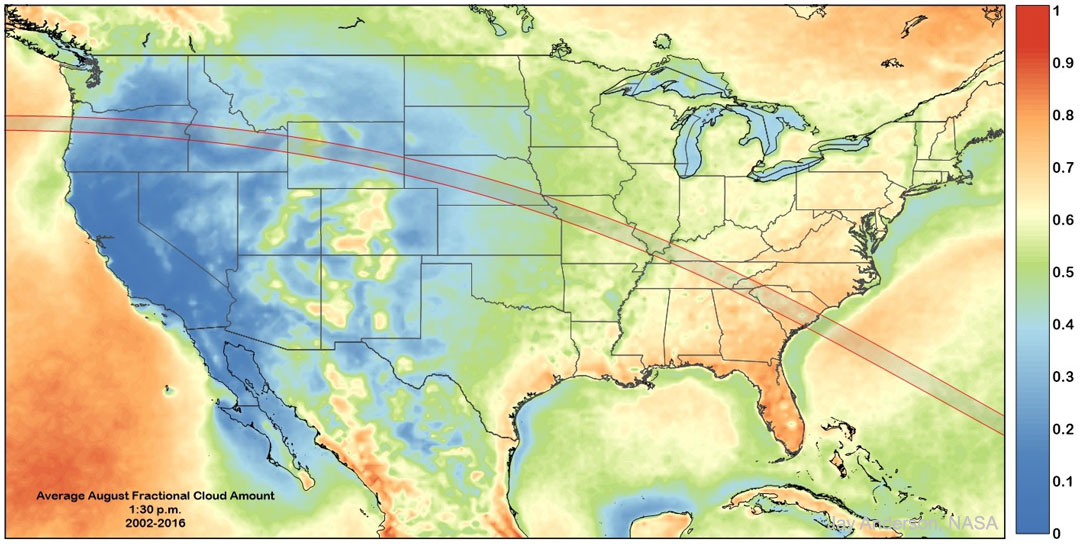
2017年1月31日 星期二
Where to See the American Eclipse

NASA Day of Remembrance

ISS Daily Summary Report – 1/30/2017
January 31, 2017 at 12:00AM
from NASA http://ift.tt/2kNMtyy
via IFTTT
2017年1月30日 星期一
Thinking Back - Looking Ahead
Scott Parazynski: Still on Cloud 10 on the summit of Mt. Everest, SpaceRef
"I tied off a pair of flags I'd made to honor astronauts and cosmonauts who had perished in the line of duty (Apollo 1, Challenger, Columbia, Soyuz 1 and Soyuz 11), as I could think of no finer place on Earth to hang them. In the coming days, weeks, months and years, like their Tibetan prayer flag counterparts, they will weather under the wind, sun and snow, and slowly lift back up into the heavens."
Arctic Memorials and Starship Yearnings, SpaceRef
"Given the sheer mass of the structure, and the slow manner with which things change here, this inukshuk may well be standing 500 years from now. That should be long enough. Maybe someone serving on a starship will think to visit it."
Ancient Memorials for Modern Space Explorers, SpaceRef
"A week prior to my departure I got a call from June Scobee Rodgers, the widow of Challenger's commander Dick Scobee. She was thrilled with what we were doing and asked if we'd like to place a few mementos in the inukshuk. She then described what she was sending. A day or so later a package arrived. As I opened it I told my wife, with a bit of a tear in my eye, "this is history". I had been sent one of the few items Dick Scobee had left in his briefcase when he took off for his last mission: a business card and a mission lapel pin. I am certain that his family has so little in the way of such items. As such I was really honored that the family had chosen this inukshuk we planned to build on Devon Island, as the place where such precious items would rest."
Columbia: Thinking Back - Looking Ahead, Excerpt from "New Moon Rising", by Frank Sietzen, Jr. and Keith Cowing
"At the end of the event, Rona Ramon, Ilan's widow, spoke last. Steeling her emotions with grace and clarity, she spoke elegantly and briefly. She thanked all for coming. And then she talked of her husband, and the flight of the lost shuttle. "Our mission in space is not over" she told the hushed audience. "He was the first Israeli in space -- that means there will be more."
from NASA Watch http://ift.tt/2klEvLT
via IFTTT
NASA Hosts Media Day for Colorado Study of Snow-bound Water Resources
January 30, 2017
from NASA http://ift.tt/2jM0Pha
via IFTTT
NASA OIG Reports Mars 2020 Rover Sampling System as Largest Risk
NASA OIG: Audit of the Mars 2020 Rover Project
"The largest risk to the Mars 2020 schedule is the Project's Sample and Caching Subsystem (Sampling System), which will collect core samples of Martian rocks and soil and place them on the planet's surface for retrieval by a future robotic or human mission. At Preliminary Design Review (PDR), three of the Sampling System's critical technologies were below technology readiness level (TRL) 6, meaning the prototype had not yet demonstrated the capability to perform all the functions required. Projects are evaluated during PDR to ensure they meet all system requirements with acceptable risk and within cost and schedule constraints. The immaturity of the critical technologies related to the Sampling System is concerning because, according to Mars 2020 Project managers, the Sampling System is the rover's most complex new development component with delays likely to eat into the Project's schedule reserve and, in the worst case scenario, could delay launch. As of December 2016, the Project was tracking the risk that the Sampling System may not be ready for integration and testing - the period when a spacecraft is built, undergoes final testing, and is prepared for launch - in May 2019, as planned."
from NASA Watch http://ift.tt/2kjOJNe
via IFTTT
Next SpaceX Mission is Now the ISS Cargo Resupply CRS-10
Station cargo flight leapfrogs commercial satellite launch on SpaceX manifest, SpaceNews
"SpaceX said Sunday that the first Falcon 9 rocket launch from pad 39A, a former shuttle-era complex at NASA's Kennedy Space Center in Florida, is scheduled to send a Dragon supply ship to the International Space Station in mid-February, deferring a mission with an EchoStar communications satellite that was set to take off this month."
from NASA Watch http://ift.tt/2kjT6rp
via IFTTT
Coy Dione

2017年1月29日 星期日
Red Aurora Over Australia
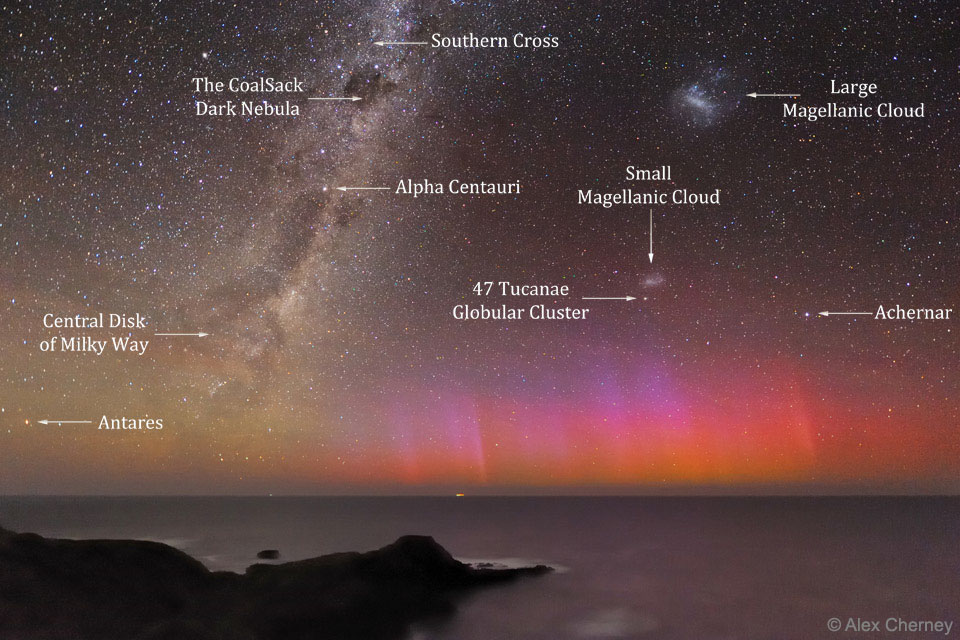
Challenger
Remembering the Challenger Crew, Challenger Center for Space Science Education
"On this day 31 years ago, Space Shuttle Challenger and its seven-member crew were tragically lost. The crew members - Dick Scobee, Gregory Jarvis, Christa McAuliffe, Ronald McNair, Ellison Onizuka, Judith Resnik, and Michael J. Smith - were part of the first Teacher in Space Project. Challenger Center, formed by the families of the crew, is dedicated to the educational spirit of their mission. Every year, together with our 43 Challenger Learning Centers, we provide more than 250,000 students with the opportunity to become scientists, engineers, and innovators through unique education experiences."
from NASA Watch http://ift.tt/2jiEAR4
via IFTTT
2017年1月27日 星期五
Firm Commercial Crew Flight Dates Remain Elusive
Technical troubles likely to delay commercial crew flights until 2019, Ars Technica
"Boeing has set a "no earlier than" date of August 2018 for its first crewed test flight, and SpaceX has targeted May 2018. But those dates seem optimistic. Ars spoke to a handful of sources familiar with the commercial crew program this week, and all expressed pessimism about the public timelines the companies have for reaching the launch pad. According to this unofficial analysis, even a single crewed test flight in 2018 by either company now appears unlikely, as teams from both Boeing and SpaceX continue to work through significant technical issues."
from NASA Watch http://ift.tt/2kcDmWL
via IFTTT
Update: NASA Is Still Telling Everyone What It Does For Them
|
from NASA Watch http://ift.tt/2jyumLd
via IFTTT
The Winter 2016 issue of The Planetary Report
from Planetary Society Blog http://ift.tt/2jetIDV
via IFTTT
NASA Invites Media Behind the Scenes of Volcano, Coral Reef Research
January 27, 2017
from NASA http://ift.tt/2jxvDls
via IFTTT
Apollo 1 Crew Honored

Apollo 1
'We have a fire in the cockpit!' The Apollo 1 disaster 50 years later, Washington Post
"The fire made NASA personnel more aware and focused on "quality control," said Charlie Duke, another astronaut. [Walt] Cunningham, who was on the backup crew, said it didn't really change him as an astronaut, but "may have given me a little bit more mental commitment to not go along with some of the things on the design, and what-have-you." After the fire, Sieck said, personnel did speak up more. "There was a lot more questioning of, 'well, please explain this to me,'" Sieck said. "'I see what's here, I hear what you're saying, but tell me more. I don't totally understand it.'" It was a lesson NASA would have to learn again after the space shuttle Challenger disaster. And again after the space shuttle Columbia disaster."
Additional Cosponsors Sought For Apollo 1 Arlington Memorial Legislation, earlier post
from NASA Watch http://ift.tt/2kBnZZ4
via IFTTT
ISS Daily Summary Report – 1/26/2017
January 27, 2017 at 12:00AM
from NASA http://ift.tt/2ksZNVw
via IFTTT
2017年1月26日 星期四
GOES-16: Moon over Planet Earth

Just A Reminder: NASA Is Required To Tell Everyone What It Does
Just a reminder: @NASA is required BY LAW to tell everyone everywhere what it has learned. That law has not changed @Alt_NASA @RogueNASA http://pic.twitter.com/TVa22gJOa8
— NASA Watch (@NASAWatch) January 26, 2017
from NASA Watch http://ift.tt/2kznsqF
via IFTTT
January 1986 - Voyager 2 Flyby of Miranda

ISS Daily Summary Report – 1/25/2017
January 26, 2017 at 12:00AM
from NASA http://ift.tt/2k7x3Em
via IFTTT
Let's talk about this whole Moon vs. Mars thing for human spaceflight
from Planetary Society Blog http://ift.tt/2j7NL6Y
via IFTTT
2017年1月25日 星期三
These Large NASA-Supporting Twitter Accounts Did Not Exist 48 Hours Ago
|
|
from NASA Watch http://ift.tt/2jUapgf
via IFTTT
NASA's Uncertain Direction
Make NASA Great Again: A Memo to the New Administration, Futurism
"So [George] Abbey thinks the architecture of NASA's future plans should be thoroughly examined and redrawn. It won't even require a budgetary increase - just a smarter allocation of the currently available funding. For instance, he suggests scrapping the SLS program altogether. There's too much redundancy in the heavy-lift rocket market - SpaceX is working on their Falcon Heavy, Blue Origin is busy developing the New Glenn booster, and United Launch Alliance is drawing up plans for a Vulcan rocket. He also thinks a simple scaling-up of Boeing's already-proven and successful X-37 would create a serviceable replacement for the decommissioned shuttle fleet - a spaceplane that could be fitted for crewed flights and that also has the ability to transport matériel into space for orbital, in situ assembly."
NASA under Trump is still waiting for marching (and launching) orders, Washington Post
"The Trump administration's "beachhead team" for NASA showed up Monday. So far, according to Lightfoot, everyone's just getting desks and phones and computers assigned. There has been no command from on high to change policies about communications - nor any attempt to take down the agency's extensive online discussions of human-influenced climate change or other scientific issues."
from NASA Watch http://ift.tt/2kuuPM7
via IFTTT
NASA and SpaceX Alumni Head For Boulder
Robert Braun named new dean of engineering and applied science, University of Colorado Boulder
"University of Colorado Boulder Provost Russell L. Moore today announced the appointment of Robert D. Braun as dean of the College of Engineering and Applied Science. Prior to joining the Georgia Tech faculty in 2003, Braun worked at the NASA Langley Research Center for 16 years."
White House, SpaceX Veteran Phil Larson Joining CU Boulder, University of Colorado Boulder
"The University of Colorado Boulder's College of Engineering and Applied Science Dean Bobby Braun is announcing the appointment of Phil Larson as assistant dean for communications, strategy, and planning, where he will lead strategic relations for the college. Larson - who was senior advisor for space and innovation at the White House, where he served from 2009 to 2014 - will join CU Boulder in February. Most recently, Larson was part of Elon Musk's SpaceX team, supporting communications efforts as well as managing corporate projects."
from NASA Watch http://ift.tt/2k5xWxd
via IFTTT
NASA Remembers Its Fallen Heroes, 50th Anniversary of Apollo 1 Accident
January 25, 2017
from NASA http://ift.tt/2k1K95z
via IFTTT
Juno’s Close Look at a Little Red Spot

Russia’s Proton rocket grounded by poor quality control
from Planetary Society Blog http://ift.tt/2jx9MII
via IFTTT
Need a break from Earth? Go stand on Mars with these lovely landscapes
from Planetary Society Blog http://ift.tt/2jZtQGz
via IFTTT
ISS Daily Summary Report – 1/24/2017
January 25, 2017 at 12:00AM
from NASA http://ift.tt/2jZrjw5
via IFTTT
2017年1月24日 星期二
M78 and Orion Dust Reflections
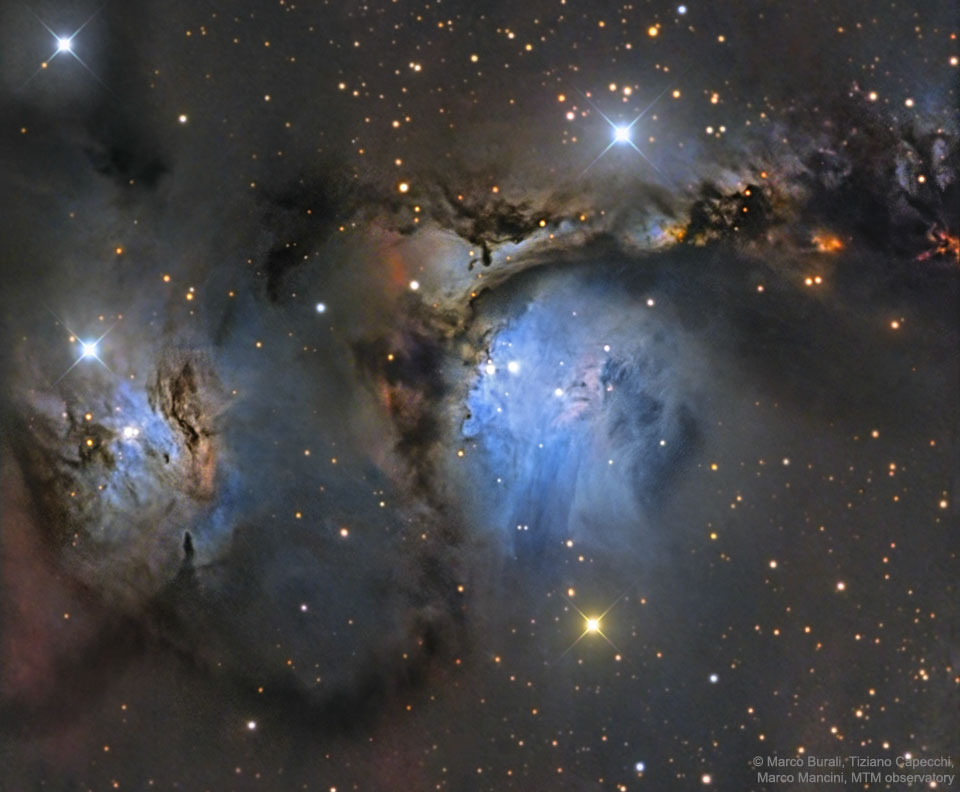
A writing sabbatical
from Planetary Society Blog http://ift.tt/2kqQJzC
via IFTTT
Experience NASA at Super Bowl LIVE Fan Festival in Houston
January 24, 2017
from NASA http://ift.tt/2jZPACu
via IFTTT
Oklahoma Students to Speak to NASA Astronaut on Space Station
January 24, 2017
from NASA http://ift.tt/2jOe5jP
via IFTTT
ISS Daily Summary Report – 1/23/2017
January 24, 2017 at 12:00AM
from NASA http://ift.tt/2koV2M3
via IFTTT
NASA Simulates Orion Spacecraft Launch Conditions for Crew

Government Agencies Are Getting Nervous
USDA Scientists Have Been Put On Lockdown Under Trump, Buzzfeed
"The US Department of Agriculture has banned scientists and other employees in its main research division from publicly sharing everything from the summaries of scientific papers to USDA-branded tweets as it starts to adjust to life under the Trump administration, BuzzFeed News has learned. According to an email sent Monday morning and obtained by BuzzFeed News, the department told staff - including some 2,000 scientists - at the agency's main in-house research arm, the Agricultural Research Service (ARS), to stop communicating with the public about taxpayer-funded work. "Starting immediately and until further notice, ARS will not release any public-facing documents," Sharon Drumm, chief of staff for ARS, wrote in a department-wide email shared with BuzzFeed News."
EPA Freezes Grants, Tells Employees Not To Talk About It, Sources Say, Huffington Post
"The Environmental Protection Agency has frozen its grant programs, according to sources there. EPA staff has been instructed to freeze all its grants - an extensive program that includes funding for research, redevelopment of former industrial sites, air quality monitoring and education, among other things - and told not to discuss this order with anyone outside the agency, according to a Hill source with knowledge of the situation. An EPA staffer provided the information to the congressional office anonymously, fearing retaliation. It's unclear whether the freeze is indefinite or temporary as the agency transitions fully to the Trump administration; the Senate has not yet confirmed Trump's pick for EPA administrator, Scott Pruitt. It's also not clear the immediate impact the grant freeze would have on programs across the country, since EPA grants are distributed at varying intervals and frequency."
from NASA Watch http://ift.tt/2knI1Ge
via IFTTT
NASA Leadership Changes Underway?
|
|
from NASA Watch http://ift.tt/2jkBYkj
via IFTTT
2017年1月23日 星期一
Is This How We Will Get Our Official Science News?
Republicans defend Trump on media coverage, The Hill
"But that didn't stop House Science Committee Chairman Lamar Smith (R-Texas) from taking the House floor Monday night to claim the media would cover Trump differently if he weren't a Republican. ... Smith said. "No, the national liberal media won't print that or air it or post it. Better to get your news directly from the president. In fact, it might be the only way to get the unvarnished truth," he concluded. Smith delivers House floor speeches at least once a week criticizing the mainstream media. Earlier this month, he denounced a New York Times column describing the impact of droughts in Africa believed to be exacerbated by climate change as "fake news."
from NASA Watch http://ift.tt/2iYvAR6
via IFTTT
Reading The TrumpSpace Tea Leaves
President Trump and science: 10 things to look for (and fear?), Science
"Whither space exploration? Space was never a front-burner issue for the Obama administration, and NASA Administrator Charles Bolden was generally viewed as at best a cheerleader for policies on human and robotic exploration that were poorly articulated and never adequately funded. Does Trump have a more muscular vision? Is "unlocking the mysteries of space" a tacit endorsement of what some influential Republicans hope will be a costly robotic mission to find life on a watery moon of Jupiter? Does it presage astronauts returning to the moon? And what will be his administration's stance on commercial space ventures?"
Obama's NASA made strides on commercial space, but stumbled on exploration, The Verge
"During the presidential campaign, advisors to President-elect Trump expressed praise for the focus on public-private partnerships in space. However, those same advisors hinted that all of Obama's efforts in strengthening NASA's Earth Science division may be undone, and that all of the space agency's climate missions may be transferred to the National Oceanic and Atmospheric Administration."
from NASA Watch http://ift.tt/2jqarLM
via IFTTT
Government Agencies Are Nervous About All That Climate Stuff
CDC quietly cancels long-planned climate summit, EENews
"The Centers for Disease Control and Prevention quietly and abruptly canceled a major climate change summit scheduled for next month shortly after Donald Trump was elected president, according to emails sent to those scheduled to speak and obtained by E&E News. The Climate and Health Summit was scheduled to be held in Atlanta, where the CDC is headquartered, in February. Agency leaders did not directly address why the summit was canceled and instead forwarded an email sent to participants indicating it may be rescheduled. "We are currently exploring options so that the Summit may take place later in the year," CDC officials wrote."
from NASA Watch http://ift.tt/2kkIdGm
via IFTTT
David Radzanowski Is The Guy Who Made Things Work At NASA
Keith's note: Last week NASA HQ was told by the incoming Trump administration that they wanted Chief Financial Officer David Radzanowski to stay on for while after the Inauguration to help with the transition. Then the Trump people suddenly changed their minds and Dave was no longer a NASA employee at noon on Friday. As such Dave did not have a proper chance to say farewell to folks at NASA. Before he was CFO he was the NASA Chief of Staff. Dave is one of those people in government that most folks never hear of. He just did his job diligently without any arm waving and did it exceptionally well. Dave was absolutely vital to how NASA worked - especially when it worked well. Its too bad he was not able to have a proper send off.
from NASA Watch http://ift.tt/2kkmcYb
via IFTTT
NASA TV to Broadcast Cargo Ship Departure from Space Station
January 23, 2017
from NASA http://ift.tt/2jK7yq2
via IFTTT
Is a Reduction In Force in NASA's Future?
Revenge of the bureaucrats, Politico
"The Trump personnel team led by Kay Coles James and Linda Springer, both also Bush alumni, has broad goals to reduce the size of domestic agencies while slightly bolstering the defense workforce, say sources close to the transition. Aides are also mulling a process, known as "reduction in force," that would allow the new administration to skirt the civil service's complicated rules for hiring and firing. The easiest way to make such reductions might be through budget cuts to each agency, which would be outlined in Trump's first budget proposal this spring."
from NASA Watch http://ift.tt/2jiwNBm
via IFTTT
NASA Television to Air Service Celebrating Life, Legacy of Eugene Cernan
January 23, 2017
from NASA http://ift.tt/2jJQX5V
via IFTTT
New Weather Satellite Sends First Images of Earth

Is SpaceX Trump's Favorite Rocket Company?
Looks like @ElonMusk from @SpaceX just had his third meeting with the Trump team https://t.co/Y7Oi0eiNNv
— NASA Watch (@NASAWatch) January 23, 2017
from NASA Watch http://ift.tt/2jTPjkC
via IFTTT
2017年1月22日 星期日
SpaceX Falcon 9 to Orbit
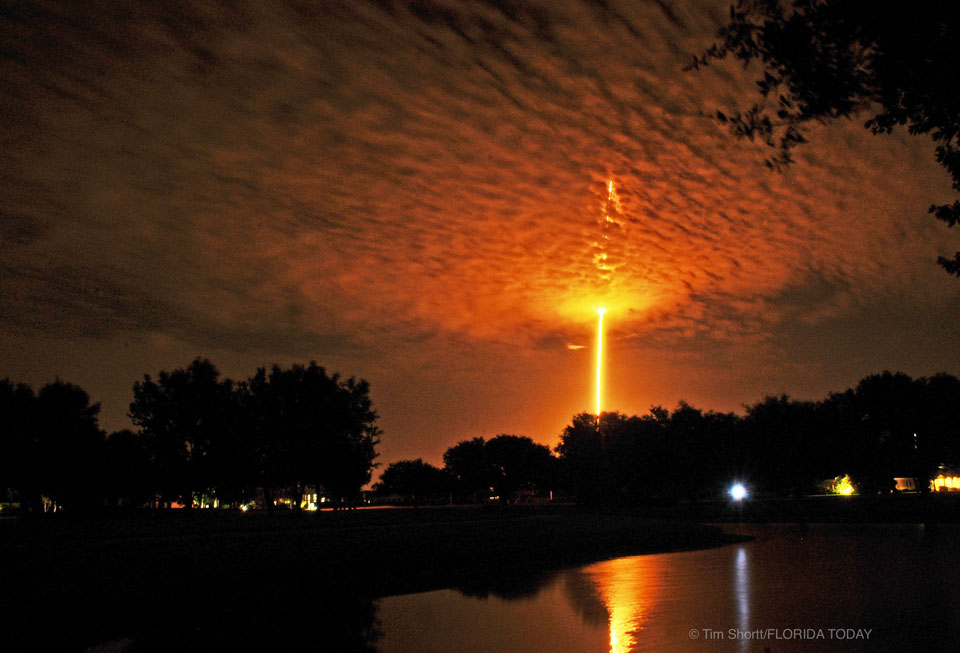
2017年1月21日 星期六
Confusing Celestial and Terrestrial Imagery
These 2 tweets w/pics just appeared in my timeline together. One is stars in another galaxy - the other is stars on the streets #womensmarch http://pic.twitter.com/TcIEwA8d3w
— Keith Cowing (@KeithCowing) January 21, 2017
from NASA Watch http://ift.tt/2iYBsoM
via IFTTT
Will There Be New Government Social Media Content Guidelines?
Interior Department reactivates Twitter accounts after shutdown following inauguration, Washington Post
"The Interior Department reactivated its official Twitter accounts early Saturday after an abrupt shutdown following two shares of tweets that were unsympathetic to President Trump during his inauguration. Thomas Crosson, a spokesman for the National Park Service, the Interior agency whose employee retweeted the offending tweets, said the action was "inconsistent with the agency's approach to engaging the public through social media." "The Department of Interior's communications team determined that it was important to stand down Twitter activity across the Department temporarily, except in the case of public safety," Crosson said in an email. "Now that social media guidance has been clarified, the Department and its bureaus should resume Twitter engagement as normal this weekend." With one exception, Crosson said: No social media posts on the policy priorities of the new Interior secretary, because Trump nominee Rep. Ryan Zinke (R-Mont.) has not yet been confirmed. It's safe to assume that the Park Service won't be estimating the crowd size of Saturday's Women's March on Twitter."
Keith's note: This is troubling. I wonder if similar action will be taken against @NOAA and @NASA for posting all of these tweets regarding recent scientific studies about the scope, scale, and causes of global climate change.
|
|
from NASA Watch http://ift.tt/2keerDe
via IFTTT
2017年1月20日 星期五
The First TrumpSpace Launch
The first rocket launch from America during the @realDonaldTrump administration uses two Russian engines #ATLASV #SBIRS http://pic.twitter.com/C5ZSzO40nn
— NASA Watch (@NASAWatch) January 21, 2017
from NASA Watch http://ift.tt/2ka63jY
via IFTTT
NASA Headquarters Transition Update - New 9th Floor Faces
Erik Noble, White House Senior Advisor at NASA
- Political Data Analyst - Trump Data and Voter Outreach Team, Donald J. Trump For President, Inc.
- Adjunct Assistant Professor, Atmospheric Science, The City College of New York
- Scientist, Atmospheric Science, NASA January 2007 December 2013 (7 years) New York, NY
- University of Colorado at Boulder, Doctor of Philosophy (Ph.D.), Environmental Studies: focus on Atmospheric Sciences
Gregory Autry, White House Liaison
- Assistant Prof. Clinical Entrepreneurship, USC. Space industry expert. Entrepreneur. Writer.
- Member of the Editorial Board, New Space Journal
- Research Lead, Commercial Space Group, AIAA
- Producer, Death By China - Film
- Senior Economist, Coalition for a Prosperous America
from NASA Watch http://ift.tt/2jy1L78
via IFTTT
NASA Headquarters Transition Update
Message from the Acting Administrator of NASA
"As the transition progresses, we have some initial assignments from the new administration. Erik Noble has been named White House Senior Advisor at NASA. Greg Autry, who was with the Agency Review Team, has been named White House Liaison. I know you will all join me in giving them a warm welcome to the NASA family and thanking them for becoming part of this great agency. There will be other new and familiar faces arriving at Headquarters, and we will communicate with you as often as possible to keep you apprised of those developments."
from NASA Watch http://ift.tt/2jIuhoM
via IFTTT
An Evolving Strategy For SpaceX?
Elon Musk's surprising secret weapon: Trump?, CNN
"In recent weeks, the Tesla (TSLA) and SpaceX CEO has been named to Trump's team of business advisers and visited Trump Tower twice. The first time he was part of a big meeting with tech CEOs; the second came earlier this month for a private meeting with Trump's top aides. The blossoming relationship between Musk and Trump's camp has caught the attention of Tesla investors. "Elon Musk has an important line of communication to Donald Trump through his role as a strategic advisor to the President-elect," Adam Jonas, an analyst with Morgan Stanley, wrote in an investor note Thursday. "We believe this level of coordination with the new administration could actually evolve into greater strategic value than with the prior administration," Jonas added. While the investor note was specifically about Tesla, it could also apply to SpaceX, which has lucrative government contracts for space shipments."
from NASA Watch http://ift.tt/2j2yLFD
via IFTTT
ISS Daily Summary Report – 1/19/2017
January 20, 2017 at 12:00AM
from NASA http://ift.tt/2jUqAKb
via IFTTT
2017年1月19日 星期四
Trump Budget Forecast For NASA? Gloomy
Trump team prepares dramatic cuts, The Hill
"The changes they propose are dramatic. The departments of Commerce and Energy would see major reductions in funding, with programs under their jurisdiction either being eliminated or transferred to other agencies. The departments of Transportation, Justice and State would see significant cuts and program eliminations. Overall, the blueprint being used by Trump's team would reduce federal spending by $10.5 trillion over 10 years."
Trump reportedly wants to cut cultural programs that make up 0.02 percent of federal spending, Washington Post
"For example, about half of the government's discretionary spending is on the military. Cutting all discretionary spending each year means cutting all funding for the military, which is both politically and rationally a nonstarter. The formulas for how much is spent on the non-discretionary spending can be adjusted, but Trump has pledged not to cut spending on the so-called "entitlement" programs."
from NASA Watch http://ift.tt/2juboUp
via IFTTT
Confusion Over Naming of Features on Pluto
Keith's note: There as a live Facebook webcast today about the New Horizons mission. I submitted this question which was asked of New Horizons PI Alan Stern: "A variety of names are used by the New Horizons team in public and in scientific publications for features on Pluto and Charon based on images obtained during the flyby. Have any of these names been formally submitted to the IAU by the New Horizons team or NASA? Have any of these feature names been formally approved by the IAU?"
Dawn arrived at Ceres in 2015 a few months before New Horizons flew past Pluto. IAU has already approved a bunch of names on Ceres yet no names have been formally approved for Pluto. During the webcast Stern replied to my question by saying that the IAU required that a proposal for themes for naming be submitted, that "the ball is in the IAU's court", and that once that has been approved then they will submit names by the end of this year. Yet if you go to the IAU website you will see that they already have a naming theme for Pluto and its moons. So it is somewhat confusing as to why New Horizons has yet to submit any feature names.
Meanwhile all of the unofficial feature names are used in scientific papers and even on commercial products such as Pluto globes. It would certainly seem that the New Horizons team is in no hurry to send anything to the IAU due to the "dwarf planet" nomenclature hostility that has been simmering between them for years. In other words they can force the issue of their feature names being accepted (in contrast to what IAU had already established) by dragging their feet and allowing the names to become official by default. There's certainly nothing wrong with allowing the discoverers of new planetary features name those places. But if there is a process that NASA has signed up to for all of its missions - missions that it has paid for - then everyone needs to follow the same rules.
The Real Origin Of Some Notable Pluto Nomenclature, earlier post
from NASA Watch http://ift.tt/2iPDFTn
via IFTTT
NASA Opens Media Accreditation for Next SpaceX Space Station Cargo Launch
January 19, 2017
from NASA http://ift.tt/2k81gns
via IFTTT
Amazing photos of tiny moons as Cassini orbits among the rings
from Planetary Society Blog http://ift.tt/2iGejvT
via IFTTT
Daphnis Up Close

Here's what history has to say about when Trump's NASA administrator will take office
from Planetary Society Blog http://ift.tt/2jbZiOt
via IFTTT
2017年1月18日 星期三
Space Station Vista: Planet and Galaxy
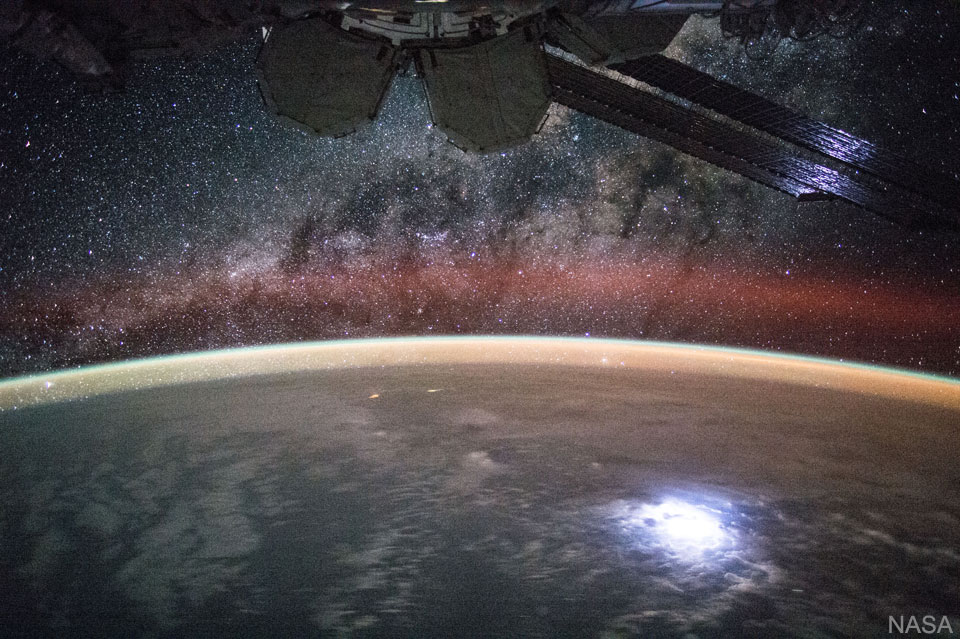
NASA Hosts News Conference, Interviews with Next Space Station Crew
January 18, 2017
from NASA http://ift.tt/2jxWFKi
via IFTTT
Possible Signs of Ancient Drying in Martian Rock

NASA Considers Involvement With Mission Control TV Series
CBS Picks Up Dana Klein/Mark Feuerstein Comedy, Andy Weir NASA Drama To Pilot, Deadine
"Written by Weir, Mission Control revolves around the next generation of NASA astronauts and scientists who juggle their personal and professional lives during a critical mission with no margin for error."
Keith's note: According to NASA PAO NASA has been approached by the show's producers and they are waiting on a script for final consideration. At this point NASA has not committed to assist the producers, allow use of its logo, facilities, staff etc.
from NASA Watch http://ift.tt/2jKXmx2
via IFTTT
NASA, NOAA Data Show 2016 Warmest Year on Record Globally
January 18, 2017
from NASA http://ift.tt/2jz5KSX
via IFTTT
ISS Daily Summary Report – 1/17/2017
January 18, 2017 at 12:00AM
from NASA http://ift.tt/2iB4GOU
via IFTTT
2017年1月17日 星期二
Family Statement Regarding Service Arrangements for Capt. Eugene A. Cernan
January 18, 2017
from NASA http://ift.tt/2juyXP3
via IFTTT
NASA Transition Updae
Keith's note: Sources report that Chris Shank is headed to DOD as part of their Beachhead team and is not staying at NASA or returning to Capitol Hill. Shank's former NASA boss Mike Griffin recently met with Trump Transition Team members and has expressed an interest in being nominated to be Secretary of the Air Force. Shank served for more than a decade in the Air Force. Stay tuned.
from NASA Watch http://ift.tt/2j6N7ma
via IFTTT